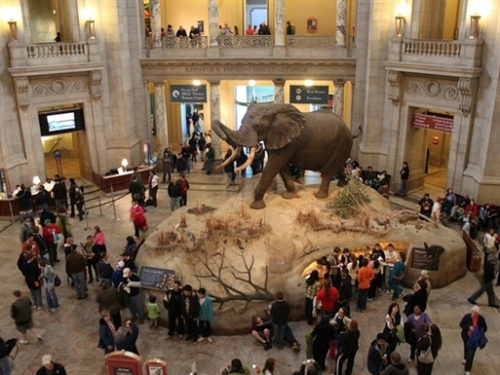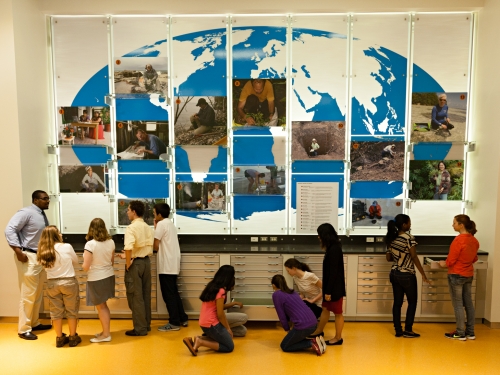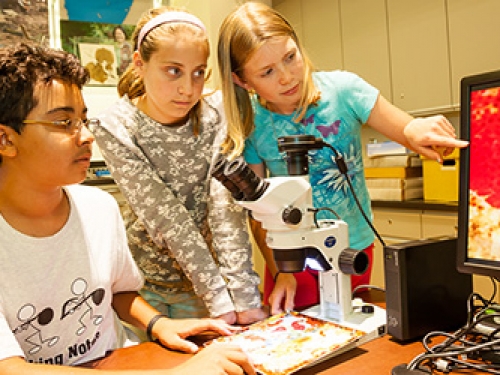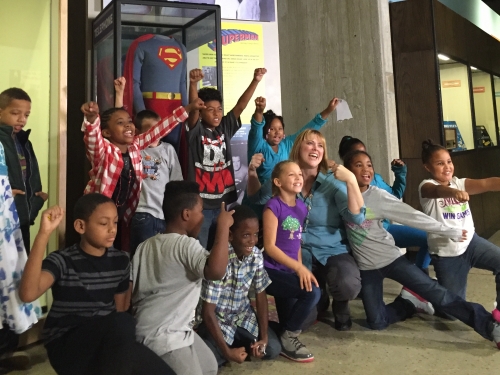Public Engagement
The Smithsonian shares knowledge with the public through compelling exhibitions, educational programs, and media products—strengthening the world’s social and intellectual capital by telling the American story, sustaining and celebrating diverse cultures and communities, revealing the natural world, and showcasing American technological achievements. We measure public engagement through onsite visits to Smithsonian museums, Zoo, and research centers, and via traveling exhibitions and our network of Affiliate museums, zoos, and other cultural organizations.

A standard measure of museum and program success is the number of people who “vote with their feet.” Collectively, more people visit Smithsonian museums than any other museum complex in the world. Visitors to the nation’s capital can tour our museums and the National Zoo 364 days a year free of charge, and visitors to Manhattan can see two museums: the George Gustav Heye Center of the National Museum of the American Indian and the Cooper Hewitt, Smithsonian Design Museum. Learn more about visiting the Smithsonian.

The Smithsonian’s 19 museums seek to provide visitors with opportunities to discover, be inspired, learn, contemplate, celebrate, have fun, socialize, and much more. Understanding the experience of visitors helps Smithsonian museums sharpen their focus and shape their exhibitions and other programs in ways that best meet visitors’ needs and interests. While the museums continually measure the visitor experience, the data in this section come from two pan-Institutional surveys in summer 2004 and across four seasons in 2015 to 2016. The Overall Experience Rating (OER) is a five-point quality rating scale used in Smithsonian visitor surveys since the early 2000's. The Net Promoter Score (NPS) is used across sectors in the US and Europe and asks, "On a scale from 0 to 10, how likely are you to recommend [museum] to a friend?”

The number of new exhibitions in a given year and total on display at the Smithsonian are measures of our research productivity and public access to the collections. Roughly, two-thirds of exhibitions are “permanent” or long-term and one-third are “temporary” exhibitions that showcase collection items not regularly on display. About two-thirds of exhibitions are classified as “major”; the other one-third are generally small cases or single special exhibit items. Explore our exhibitions.

Attendance at Smithsonian educational offerings and receipt of Smithsonian educator-created publications are indicators of educational access and quality. Educational programs range from on-site offerings such as docent-led tours, to digital learning opportunities, to special events such as the annual Folklife Festival on the National Mall. The Smithsonian Science Education Center’s inquiry-based science curriculum is helping students in every U.S. state and 25 countries worldwide gain first-hand experience of science and engineering practices. Visit our education page for more information.

The Smithsonian partners with a national network of over 200 museums, science centers, universities, and other arts and cultural organizations. These Smithsonian Affiliates extend the reach of the Smithsonian by touching millions in their local communities. The mutually beneficial relationships include sharing collections and expertise, and collaboration on education and research projects. Visit Smithonian Affiliations to learn more.

The extent to which the Smithsonian shares its collections and expertise through traveling exhibitions is another measure of outreach. The Smithsonian Institution Traveling Exhibition Service (SITES) develops and circulates an extensive range of exhibitions about art, science, history, and popular culture to exhibitors across America, from major urban museums to small rural community centers. Visit SITES for more information.
Smithsonian Organization and Audience Research/OCIO
